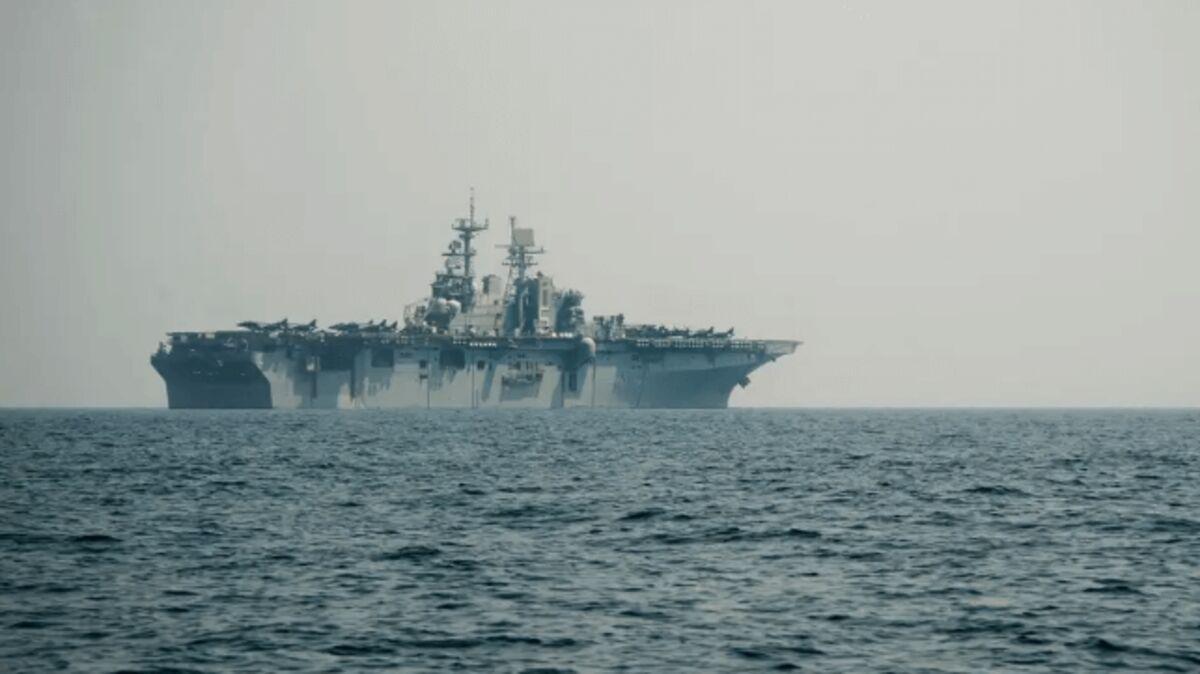Two U.S. Navy Amphibs Leave Red Sea Despite Houthi Attacks on Shipping
🔶️ The two U.S. Navy amphibs that were deployed to the Red Sea to deter Iranian-allied Houthi rebels have now been withdrawn to the Mediterranean, though attacks by Houthi forces continue unabated.
🔶️ On Thursday, USS Bataan and USS Carter Hall - two-thirds of the Bataan Amphibious Ready Group (ARG) - transited north through the Suez Canal. They are headed to meet up with the third vessel in their unit, USS Mesa Verde, and will reassemble as a full ARG.
🔶️ So far, the Biden administration has chosen not to use these capabilities (or other U.S. Navy and SOCOM assets) to counter the Houthi threat to merchant shipping. Since the beginning of the Israeli operation in Gaza, Houthi rebels have seized one Israeli-linked merchant ship and launched more than 100 drones and missiles at vessel targets in the Red Sea, including U.S. Navy warships.
🔶️ Saudi Arabia has reportedly urged the White House to refrain from striking Houthi launch sites, for several reasons. The Houthi movement is closely tied to Iran's Islamic Revolutionary Guard Corps, and it receives substantial financial and material support from Iran. Attacking Houthi units on the ground could scuttle ceasefire talks between Saudi leaders and Houthi forces, and simultaneously set back Saudi attempts to normalize relations with Iran. The Houthis also have the capability to retaliate by launching missiles at Saudi oil infrastructure, and have done so in the past.
🔶️ USS Bataan and Carter Hall may have a different mission now in the Mediterranean. The carrier USS Gerald R. Ford has had her deployment in the Mediterranean extended twice already in order to maintain deterrence against Iranian-aligned militants in Syria and Lebanon. The reconstituted Bataan ARG might have enough firepower to relieve Ford on station off Israel, allowing allow the carrier to go home at last (as previously planned, noted USNI). The carrier USS Dwight D. Eisenhower, which was originally scheduled to relieve Ford, is needed in the Gulf of Aden to assist in countering the Houthi drone threat.
🔶️ The two U.S. Navy amphibs that were deployed to the Red Sea to deter Iranian-allied Houthi rebels have now been withdrawn to the Mediterranean, though attacks by Houthi forces continue unabated.
🔶️ On Thursday, USS Bataan and USS Carter Hall - two-thirds of the Bataan Amphibious Ready Group (ARG) - transited north through the Suez Canal. They are headed to meet up with the third vessel in their unit, USS Mesa Verde, and will reassemble as a full ARG.
🔶️ So far, the Biden administration has chosen not to use these capabilities (or other U.S. Navy and SOCOM assets) to counter the Houthi threat to merchant shipping. Since the beginning of the Israeli operation in Gaza, Houthi rebels have seized one Israeli-linked merchant ship and launched more than 100 drones and missiles at vessel targets in the Red Sea, including U.S. Navy warships.
🔶️ Saudi Arabia has reportedly urged the White House to refrain from striking Houthi launch sites, for several reasons. The Houthi movement is closely tied to Iran's Islamic Revolutionary Guard Corps, and it receives substantial financial and material support from Iran. Attacking Houthi units on the ground could scuttle ceasefire talks between Saudi leaders and Houthi forces, and simultaneously set back Saudi attempts to normalize relations with Iran. The Houthis also have the capability to retaliate by launching missiles at Saudi oil infrastructure, and have done so in the past.
🔶️ USS Bataan and Carter Hall may have a different mission now in the Mediterranean. The carrier USS Gerald R. Ford has had her deployment in the Mediterranean extended twice already in order to maintain deterrence against Iranian-aligned militants in Syria and Lebanon. The reconstituted Bataan ARG might have enough firepower to relieve Ford on station off Israel, allowing allow the carrier to go home at last (as previously planned, noted USNI). The carrier USS Dwight D. Eisenhower, which was originally scheduled to relieve Ford, is needed in the Gulf of Aden to assist in countering the Houthi drone threat.
Two U.S. Navy Amphibs Leave Red Sea Despite Houthi Attacks on Shipping
🔶️ The two U.S. Navy amphibs that were deployed to the Red Sea to deter Iranian-allied Houthi rebels have now been withdrawn to the Mediterranean, though attacks by Houthi forces continue unabated.
🔶️ On Thursday, USS Bataan and USS Carter Hall - two-thirds of the Bataan Amphibious Ready Group (ARG) - transited north through the Suez Canal. They are headed to meet up with the third vessel in their unit, USS Mesa Verde, and will reassemble as a full ARG.
🔶️ So far, the Biden administration has chosen not to use these capabilities (or other U.S. Navy and SOCOM assets) to counter the Houthi threat to merchant shipping. Since the beginning of the Israeli operation in Gaza, Houthi rebels have seized one Israeli-linked merchant ship and launched more than 100 drones and missiles at vessel targets in the Red Sea, including U.S. Navy warships.
🔶️ Saudi Arabia has reportedly urged the White House to refrain from striking Houthi launch sites, for several reasons. The Houthi movement is closely tied to Iran's Islamic Revolutionary Guard Corps, and it receives substantial financial and material support from Iran. Attacking Houthi units on the ground could scuttle ceasefire talks between Saudi leaders and Houthi forces, and simultaneously set back Saudi attempts to normalize relations with Iran. The Houthis also have the capability to retaliate by launching missiles at Saudi oil infrastructure, and have done so in the past.
🔶️ USS Bataan and Carter Hall may have a different mission now in the Mediterranean. The carrier USS Gerald R. Ford has had her deployment in the Mediterranean extended twice already in order to maintain deterrence against Iranian-aligned militants in Syria and Lebanon. The reconstituted Bataan ARG might have enough firepower to relieve Ford on station off Israel, allowing allow the carrier to go home at last (as previously planned, noted USNI). The carrier USS Dwight D. Eisenhower, which was originally scheduled to relieve Ford, is needed in the Gulf of Aden to assist in countering the Houthi drone threat.






